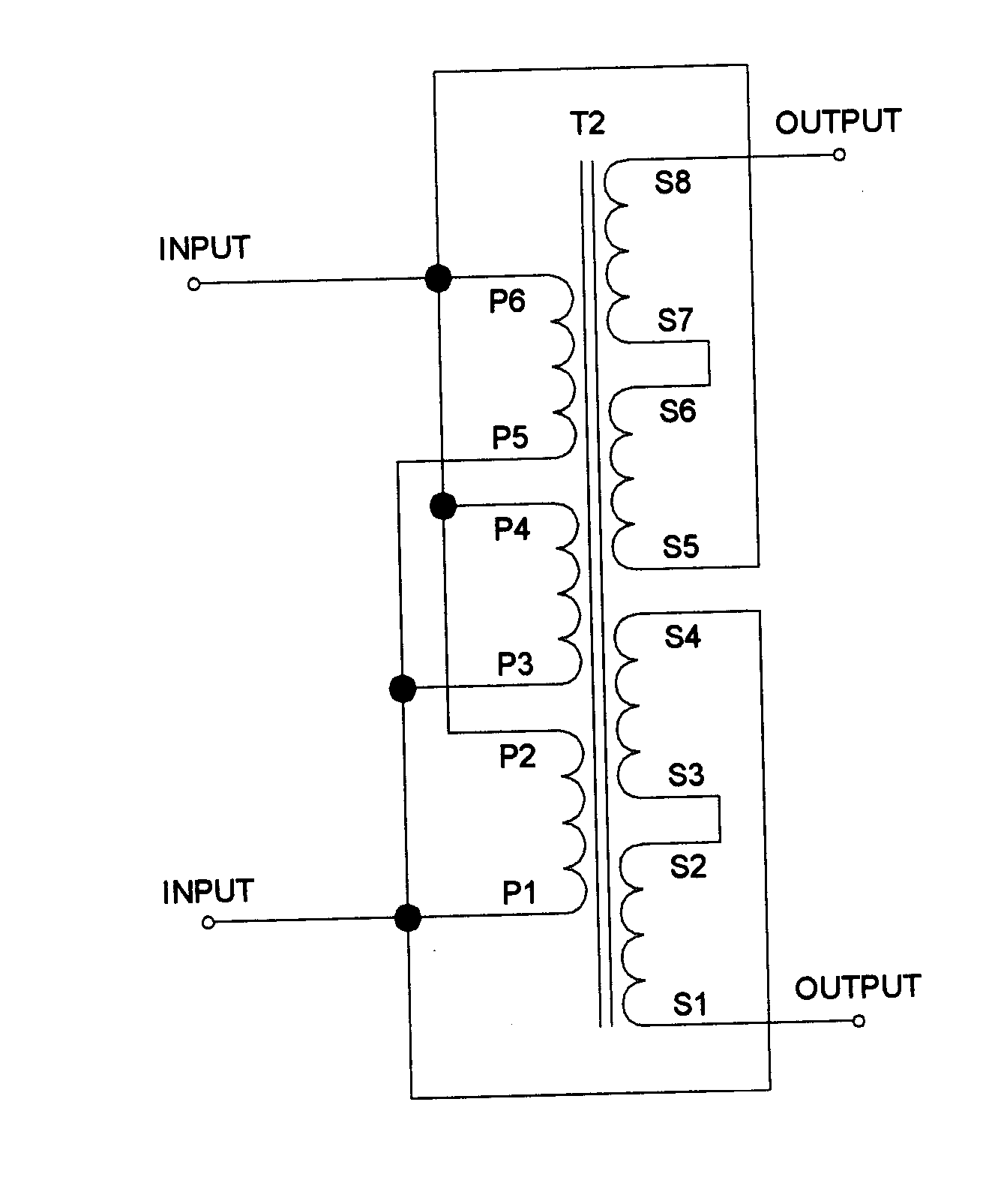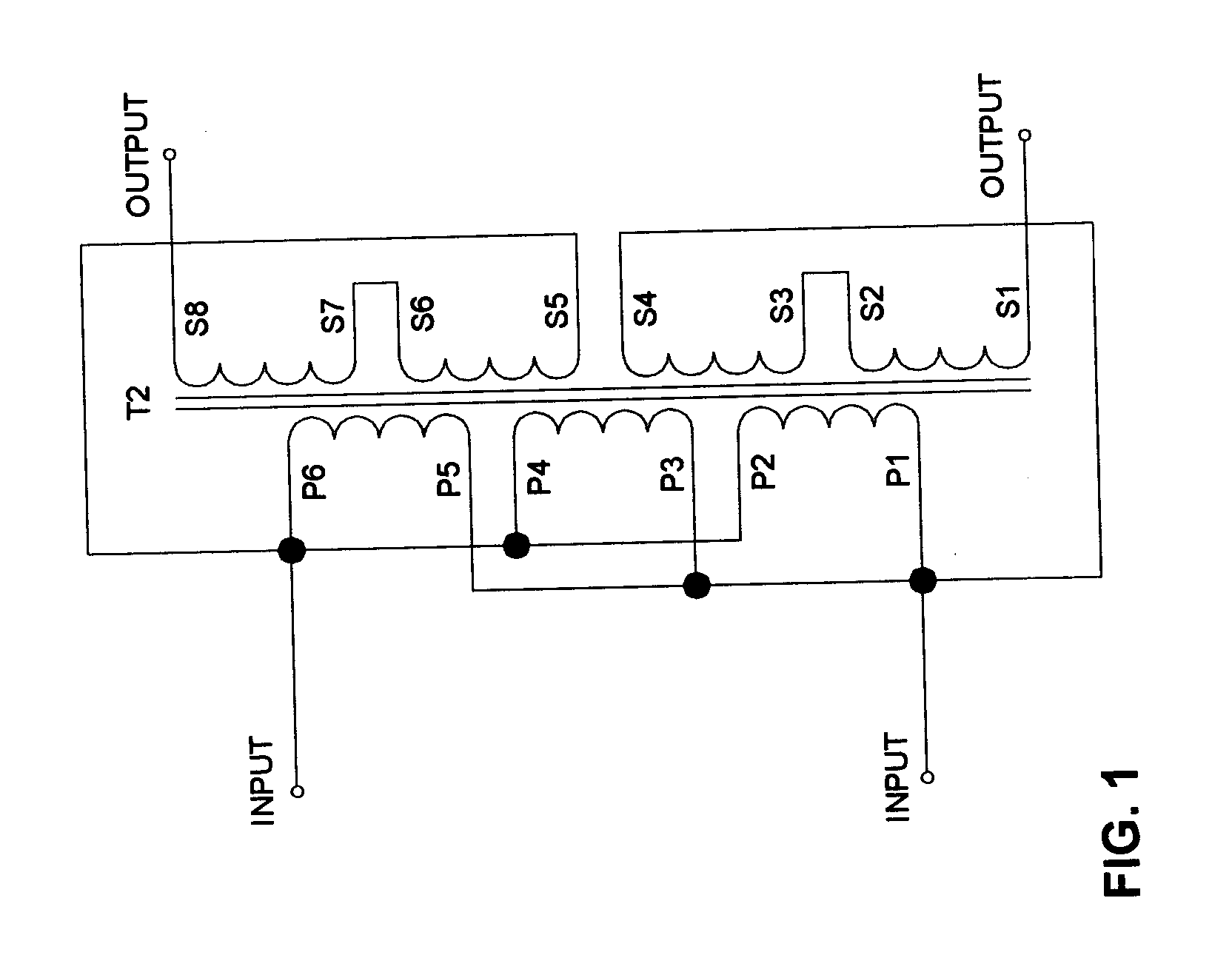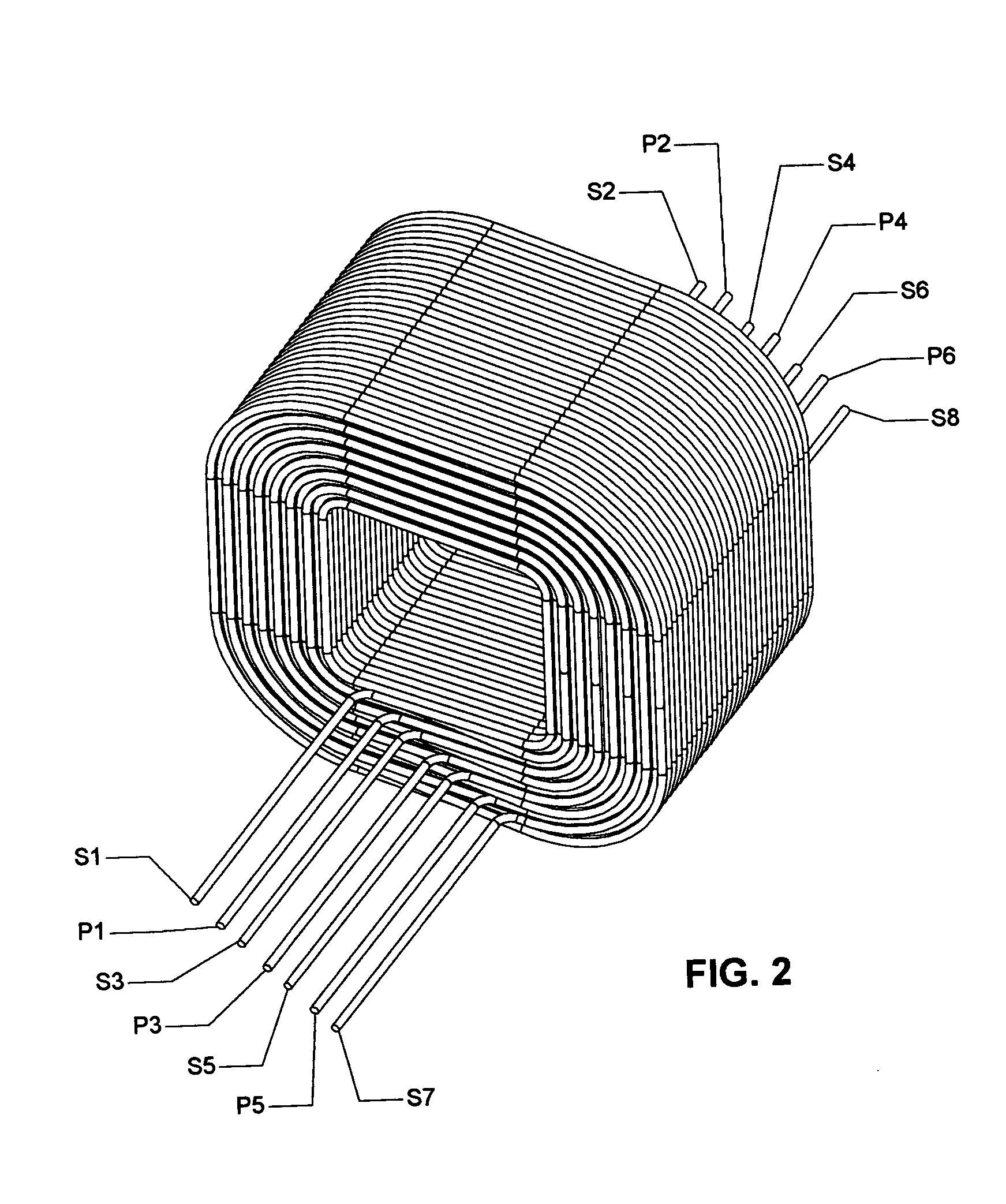Pulse type transformer with increased coupling coefficient through configuration of plural primary windings
a transformer and primary winding technology, applied in the direction of magnetic bias transformers, variable inductances, inductances, etc., can solve the problems of physical separation between primary and secondary windings, reducing the coupling coefficient, increasing secondary output power, etc., to achieve the effect of reducing all or part of the efficiency gained, high current dc pulse type transformers, and high efficiency
- Summary
- Abstract
- Description
- Claims
- Application Information
AI Technical Summary
Benefits of technology
Problems solved by technology
Method used
Image
Examples
Embodiment Construction
[0021]FIG. 1 is a circuit schematic diagram showing a preferred embodiment of the high current DC pulse type transformer invention. In FIG. 1, transformer T1 is provided with three primary windings, one winding between terminals P1 and P2, a second winding between terminals P3 and P4, and the third primary winding between terminals P5 and P6. All three primary windings are connected in parallel and connected to the INPUT terminals. In FIG. 1, transformer T1 is provided with four secondary windings, one winding between terminals S1 and S2, a second winding between terminals S3 and S4, a third winding between terminals S5 and S6, and a fourth secondary winding between terminals S7 and S8. All four secondary windings are electrically connected in series with each other and in series with the three parallel primary windings where the primary windings are electrically connected in the middle of the series secondary windings and where the ends of the series circuit is connected to the OUT...
PUM
 Login to View More
Login to View More Abstract
Description
Claims
Application Information
 Login to View More
Login to View More - R&D
- Intellectual Property
- Life Sciences
- Materials
- Tech Scout
- Unparalleled Data Quality
- Higher Quality Content
- 60% Fewer Hallucinations
Browse by: Latest US Patents, China's latest patents, Technical Efficacy Thesaurus, Application Domain, Technology Topic, Popular Technical Reports.
© 2025 PatSnap. All rights reserved.Legal|Privacy policy|Modern Slavery Act Transparency Statement|Sitemap|About US| Contact US: help@patsnap.com



